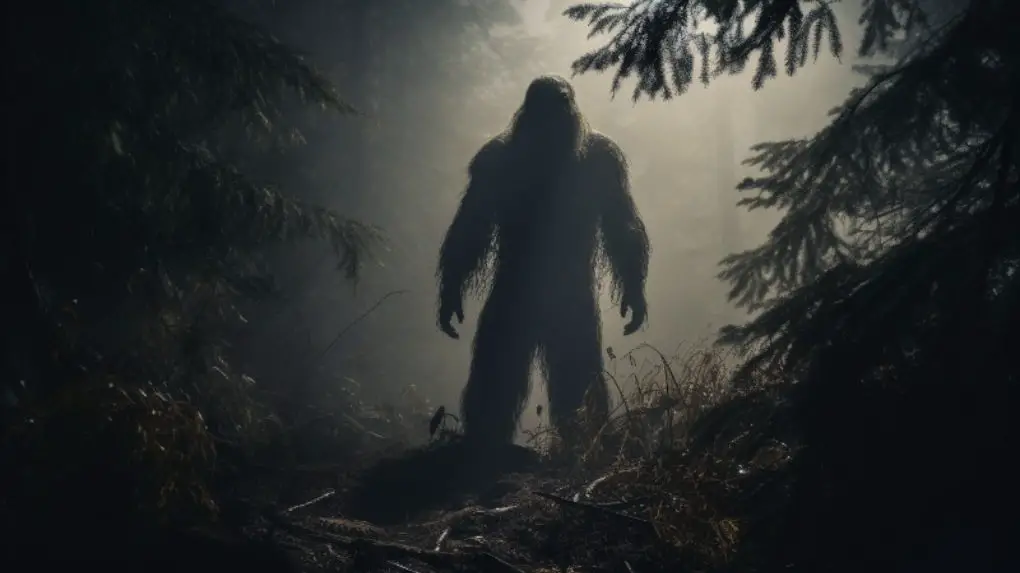Cryptids are creatures whose existence is yet to be proven or refuted through scientific means.
They range from sea serpents and wild men of folklore to more recent claims like the Bigfoot in Northern California. Cryptozoology is the study of such elusive creatures. Derived from the Greek words “kryptos,” meaning hidden, “zoo,” meaning animal, and “logos,” referring to study, cryptozoology is an intersection of science, history, and belief. It operates on the fringes of mainstream science, often relying on eyewitness accounts and blurry photographs, while occasionally being validated by the discovery of previously unknown animals.
The world is rife with tales of mysterious and elusive creatures. The Yeti of the Himalayas, the Sasquatch of North America, Mokele Mbembe of the Congo, and the Loch Ness Monster of Scotland are but a few examples. Each has its cultural history, with countless sightings and stories associated with them. Yet, despite the vast number of accounts, concrete evidence remains elusive, often leading to more questions than answers.
The Loch Ness Monster
The Loch Ness Monster, fondly known as “Nessie,” holds a significant place in both Scottish folklore and global cryptid lore. Loch Ness, a large, deep freshwater lake in the Scottish Highlands, has been the alleged home of this famous cryptid for centuries. Tales of a monster or group of monsters living in the loch date back to ancient times, but the creature’s modern notoriety began in the early 20th century when a photograph, now known as the “Surgeon’s Photograph,” was published, purportedly showing a serpentine creature’s head and neck.
This image, while later debunked as a hoax, cemented Nessie’s place in the annals of cryptid history. Since then, the idea of the Loch Ness Monster has spurred countless expeditions, scientific research projects, and even tourism booms. It serves as a symbol of the unknown in nature, and the thin line between belief and reality.
Eyewitness Accounts and Cryptid Sightings of Nessie
Over the years, there have been numerous reported sightings of Nessie. Eyewitness accounts vary, with descriptions ranging from a large creature with a long neck and humps to more dinosaur-like depictions. Some attribute these sightings to waves, logs, or other animals like seals. But for many, the sheer number of accounts and the consistency in descriptions, coupled with circumstantial evidence like sonar readings, suggest the presence of an unidentified creature in the loch.
Despite the modern era’s advanced technology, definitive evidence for Nessie’s existence remains elusive. Skeptics point to the lack of tangible evidence, while believers continue their search, hopeful that science will one day validate their beliefs.
This search embodies the essence of cryptozoology, where eyewitness accounts, cultural history, and scientific inquiry converge, leading us on a quest for understanding the mysteries of the natural world.
Also read The Loch Ness Monster Hunting for Answers
The Art and Science of Cryptid Evidence Collection and Analysis
Eyewitness accounts have played a pivotal role in shaping our understanding of cryptids. Such personal testimonies often provide a starting point for cryptid investigations. From Roger Patterson’s iconic footage of a Bigfoot-like creature at Bluff Creek, Northern California, to tales of the Abominable Snowman in the snowy peaks of the Himalayas, firsthand accounts drive the narrative.
However, relying solely on eyewitness accounts poses challenges. Memories can be fallible, and interpretations subjective. Moreover, there’s a tendency for stories to be embellished over time, blurring the lines between fact and fiction. Yet, these accounts hold value, especially when multiple unrelated eyewitnesses report similar sightings.
Scientific Evidence vs. Circumstantial Evidence
For a cryptid to transition from the realm of folklore to that of accepted science, tangible evidence is vital. This can range from physical remains, such as bones or hair, to high-resolution photographs and videos. Bernard Heuvelmans, often dubbed the “father of cryptozoology,” emphasized the importance of such evidence in his works.
Circumstantial evidence, like sonar readings or ambiguous footprints, while intriguing, is often open to interpretation. For example, a large, unidentified shape on a sonar reading in Loch Ness might be tantalizing, but without corroborative evidence, it remains inconclusive.
The Challenge of Monster Hunting in the Modern Age
Modern technology has given rise to a new generation of cryptid enthusiasts. Armed with smartphones and digital cameras, these amateur sleuths often capture images and videos purporting to be evidence of elusive creatures. Unfortunately, many of these images are of low quality or can be easily manipulated, leading to skepticism.
There’s also a proliferation of hoaxes, often fueled by a desire for viral fame. Distinguishing genuine sightings from intentional deceptions is a persistent challenge in the digital age.
You may also like The Fresno Nightcrawler: Examining the Video Evidence
Scientific Perspective on Cryptid Existence
Many scientists approach the subject of cryptids with caution. While they don’t outright dismiss the possibility of unknown creatures, the emphasis is always on evidence. In the words of guest host Sophie Bushwick during a discussion on cryptozoology, “The onus is on proving existence, not disproving it.”
The scientific method demands repeatability and verification. Unless a cryptid can be consistently observed, studied, and documented, it remains in the realm of the unverified. This stringent criteria has, at times, led to tension between the cryptozoological community and mainstream scientists.
Bridging the Gap Between Folk Tales and Scientific Method
Cryptids often have roots in local folklore. For instance, the Yeti, or the Abominable Snowman, is deeply ingrained in Himalayan culture. These tales, passed down through generations, often serve as a blend of history, culture, and morality lessons.
The challenge lies in distinguishing myth from reality. While some stories may be exaggerations or misinterpretations of real animals, others might hold kernels of truth. Recognizing this distinction is crucial.
How Science Engages with Supernatural Claims
Science, by its very nature, seeks to explain the unexplained. Supernatural claims, like the existence of cryptids, are approached with skepticism but also curiosity. The aim is to apply rigorous testing and analysis to such claims, separating fact from fiction.
Related: The Elusive Yeti: Fact or Fiction?
The Real Animals Behind Famous Cryptid Myths
Throughout history, many cryptids have been explained by science. Sea serpents, a staple of maritime folklore, have often been linked to real animals. Some reports can be attributed to encounters with large, known marine creatures like oarfish, while others might be sightings of undiscovered species. Similarly, tales of ‘wild men’ from various cultures could be based on encounters with isolated human tribes or even large primates.
Cryptids that Turned Out to be Real Animals
History is filled with instances where cryptids became recognized species. The okapi, once a legend in Africa, was scientifically described in the early 20th century. Similarly, the giant squid, long a thing of maritime legend, is now an accepted part of marine biology. Such discoveries underscore the idea that the line between cryptid and creature can be quite thin, and what’s considered a myth today might be tomorrow’s scientific discovery.
Creative Writing and Cryptids: The Influence of Fiction
Creative writing has significantly impacted the world of cryptids. Fictional tales, from Sir Arthur Conan Doyle’s “The Lost World” to more contemporary works, have introduced readers to the idea of undiscovered creatures lurking in unexplored corners of the Earth. These stories, while imaginative, often spark interest in cryptozoology, blurring the lines between fiction and reality.
The Fine Line Between Reality and Fantasy
Fiction’s power is its ability to inspire belief. Readers and viewers immerse themselves in a world where the impossible seems possible. In the realm of cryptids, this can lead to an intensified belief in their existence. It’s essential to navigate this realm with a discerning eye, recognizing the difference between a well-crafted tale and the real world’s tangible evidence.
Challenges and Critiques of Cryptozoology
Mainstream scientists and cryptozoologists often find themselves at odds. While both parties share a common goal – understanding the natural world – their approaches can differ vastly. Scientists rely on the scientific method, emphasizing peer-reviewed research and tangible evidence. In contrast, cryptozoologists often lean heavily on eyewitness accounts and circumstantial evidence.
This divergence has led to critiques of cryptozoology, with some scientists labeling it “abominable science.” They argue that without solid evidence, the study of cryptids remains more folklore than science.
The Search for Hard Evidence
For cryptozoology to gain more acceptance in the scientific community, hard evidence is essential. This could be in the form of physical remains, clear photographs, or even DNA evidence. The challenge lies in obtaining this evidence, especially when dealing with creatures that are, by definition, elusive. Nevertheless, the quest continues, with both amateur sleuths and dedicated researchers looking for that one piece of undeniable proof.
Also read The Mystery of the Coelacanth: Living Fossil or Modern Cryptid?
Impact of Cryptids on Popular Culture and Tourism
Cryptids have transcended folklore and scientific debate to become cultural icons. Bigfoot, Nessie, the Yeti – names that resonate with people worldwide, regardless of age or background. These creatures, embedded in our cultural fabric, serve multiple roles: from cautionary tales and embodiments of the unknown to symbols of regional pride.
Cryptid Tourism: A Lucrative Industry
The allure of cryptids has also given rise to a thriving tourism industry. From Loch Ness in Scotland to Bluff Creek in Northern California, locations associated with famous cryptids attract thousands of tourists annually. Local businesses thrive on this influx, offering everything from guided tours and expeditions to merchandise and themed attractions. The quest to spot Nessie or Sasquatch has become as much a part of the experience as the legends themselves.
Related Article Cryptid Locations
The Future of Cryptozoology: What Lies Ahead?
As technology advances, the tools available for cryptid research evolve. High-resolution cameras, drone technology, and advanced sonar equipment offer researchers new ways to explore and document potential cryptid habitats. In places like Loch Ness, advanced sonar technology has mapped the loch’s depths, searching for any evidence of its famed resident.
Similarly, DNA analysis offers another avenue for verification. Environmental DNA (eDNA) samples taken from water bodies or soil can help identify the species present in a particular area, potentially validating cryptid claims.
The Final Chapter: Will the Mystery Ever be Solved?
Cryptozoology’s essence is the quest for the unknown. As technology and scientific methodologies advance, some mysteries may be solved, with cryptids either being debunked or validated. However, the world is vast, and nature constantly surprises us. It’s conceivable that there will always be tales of elusive creatures, driving future generations to seek answers.
The future of cryptozoology likely holds a mix of skepticism and discovery. While some cryptids might find their place in scientific journals, others will remain enigmas, continuing to captivate our imagination.
Embracing the Unknown
The realm of cryptids and cryptozoology offers a fascinating look into the human psyche’s depths. Our desire to explore, to seek answers, and to grapple with the unknown is etched into our DNA. Whether it’s the lure of the Loch Ness Monster, the shadows thought to be Bigfoot, or tales of sea serpents passed down through generations, these stories resonate because they speak to a deeper truth. They remind us that the world is vast, filled with wonders yet to be discovered, and that sometimes, the journey is as important as the destination.
Don't miss The Reptilian Aliens Conspiracy Theory: Fact or Fiction?
The Nexus of Belief, Science, and Discovery
In every era, tales of elusive creatures have danced on the fringes of human belief and scientific inquiry. While cryptozoology sits at this intersection, the implications stretch far beyond the hunt for cryptids. It emphasizes the ever-evolving nature of science and the role of cultural history in shaping our understanding of the world.
The cryptids, from the Loch Ness Monster to the Sasquatch, have transcended being mere creatures of myth. They have become emblematic of the broader human journey—our insatiable curiosity, our need to explain the inexplicable, and our deep-rooted desire to connect with the natural world in all its vastness and mystery.
Ultimately, the study of cryptids is not just about discovering hidden creatures; it’s about understanding ourselves. It reflects our hopes, fears, and our innate drive to explore. As technology and science surge ahead, and as tales from folklore are revisited with fresh eyes, one thing remains certain: our quest for the unknown will never wane.
Whether cryptids are ever validated in the annals of science or remain elusive legends, their impact on our collective imagination is undeniable. They serve as a testament to the wonders the world holds and the endless possibilities that lie ahead.



